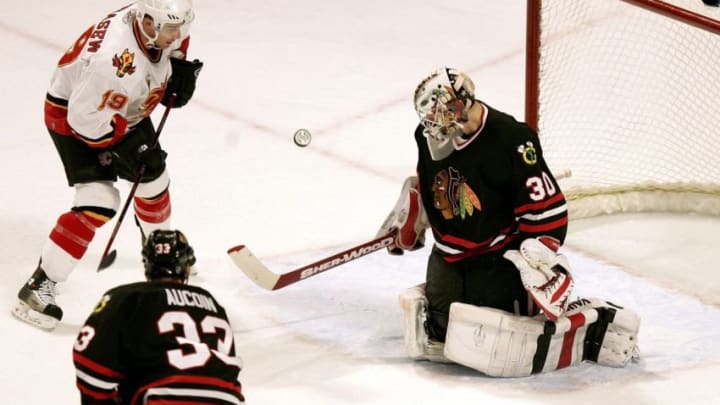
Kyle Calder is likely not the first player that Blackhawks fans think of when number 19 comes to mind. However, Calder was an integral part of the early 2000s squad, and a name that shouldn’t be overlooked.
While he was a 5th-round draft pick in 1997, Kyle Calder didn’t break into the NHL with the Blackhawks full time until the 2001-02 season. However, once he was in Chicago to stay, he did make an immediate impact on the score sheet. His 2002 campaign saw Calder score 17 goals and 36 assists for a 53 point outing. His best season numbers-wise came in 2006, when he scored 59 points in 79 games to lead the team in all major scoring categories.
Calder was a quick skating player that liked to shoot the puck, firing the biscuit on net 692 times during his career in Chicago. Also a leader like Zhamnov, Calder served as an alternate captain during his time with the Hawks. In another similar story to Zhamnov, he was eventually also traded to the Philadelphia Flyers.
The trade came the year after his outstanding 2006 season, so it’s hard to say what numbers Calder would’ve put up if he had been able to stick around with the Hawks for more time. He played professional hockey through 2012, skating for the ECHL’s Bakersfield Condors, and maintained a home in Chicago’s Lakeview neighborhood through 2018.
While this was another tough spot to fill, there is no doubt that Calder is absolutely the right pick for the all-decade left-winger.
